Fix: App and Browser Control Option Missing in Windows 11
The “App & Browser Control” option can suddenly go missing or may not open, usually after a Windows update or while using an Insider build. When this happens, the Windows Security screen can’t show or load the SmartScreen and Exploit Protection features, which help keep your PC safe.
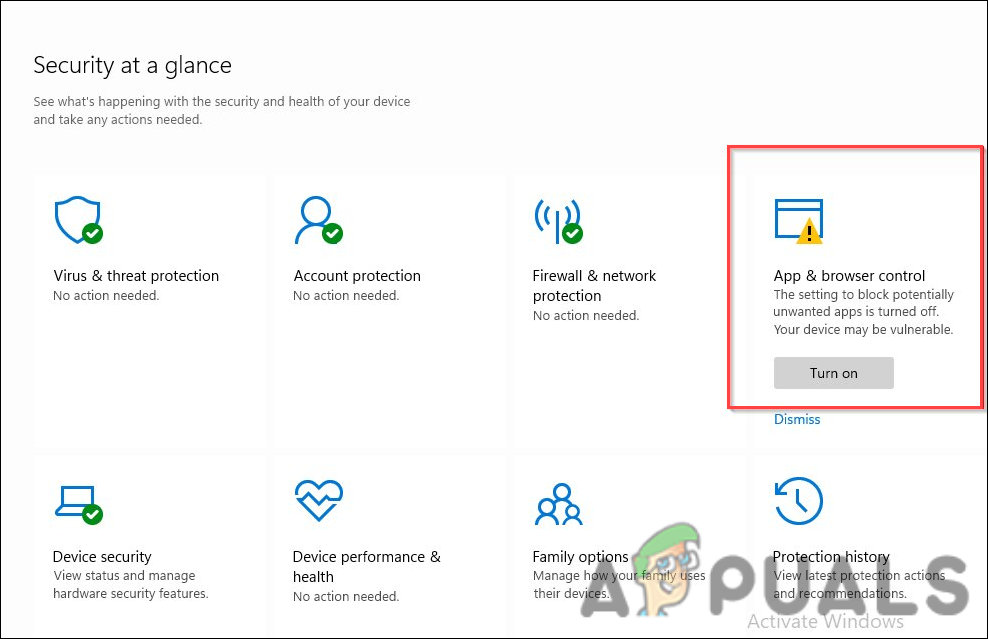
Most often, this problem is caused by a bad Windows Security update—especially version 1.0.2207.20002. Other reasons can include damaged app files, broken registry entries, or missing parts of the system.
Now that we’ve identified the possible causes, let’s move on to the troubleshooting steps that can help you fix the problem for good. It’s best to read through all the solutions first to see which one applies to your situation. Once you know which issue you’re likely facing, proceed with the most relevant fix.
1. Access the Feature via Windows Search
One quick and effective way to get to the App & Browser Control settings is to type “App & Browser Control” in the search box on your taskbar, and then click the result that appears.
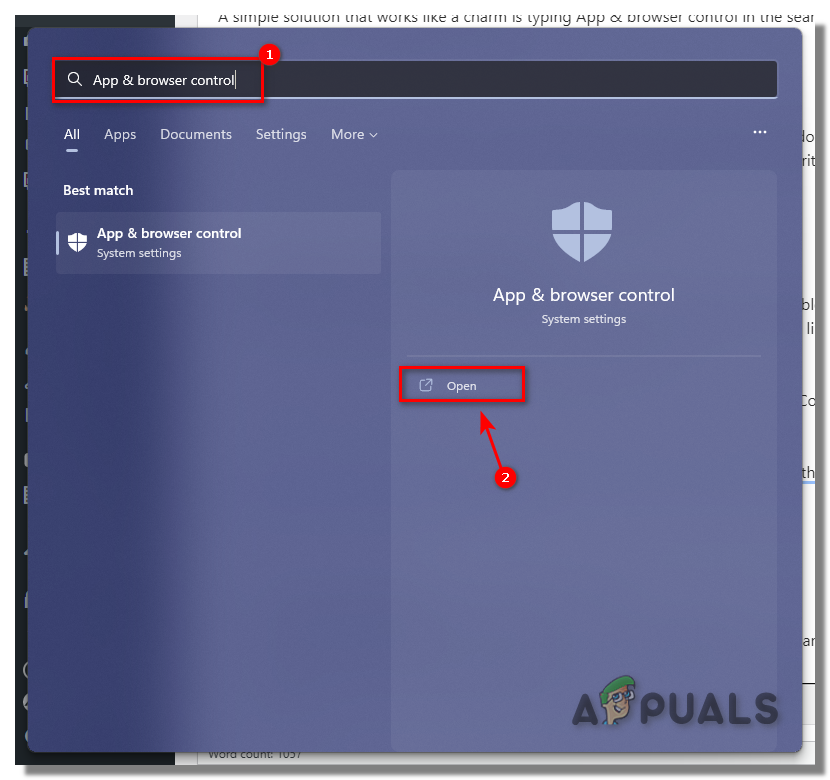
When you click Open, you’ll be taken directly to the App & Browser Control section in Windows Security. Here, you can turn on reputation-based protection and adjust other settings to improve your system’s security.
2. Install the Pending Updates
As mentioned earlier, the App & Browser Control option can go missing if there are pending Windows or Security updates. If your system or Windows Security app isn’t updated, you may encounter compatibility issues like this one.
First, we’ll update Windows using the Settings app, and then update Windows Security through Command Prompt.
If your issue is due to an outdated system, installing all updates should resolve it permanently.
- Press Win + I to open Windows Settings.
- Select Windows Update from the menu on the left.
- On the right, click Check for updates. If there are updates available, wait for Windows to find and list them.
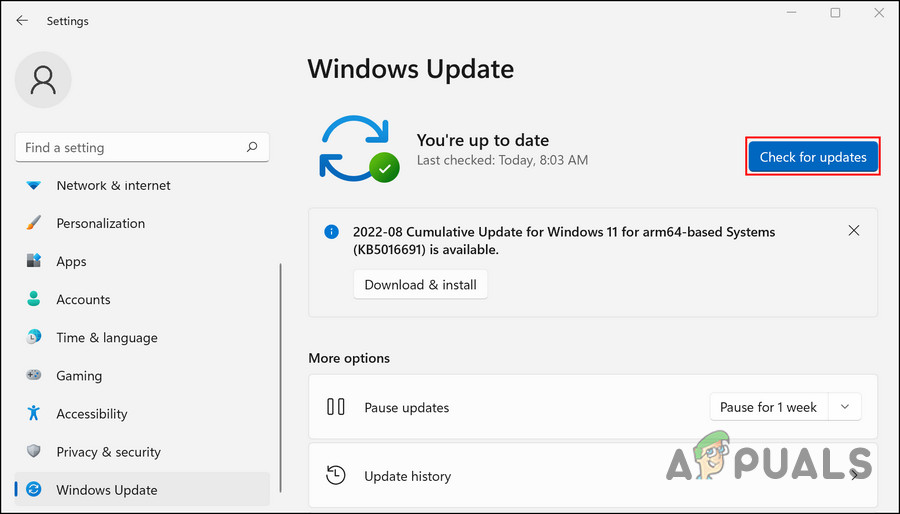
Click on the Check for updates button - Install all available updates.
After updating through the Settings app, you should also check for security updates. Here’s how:
- Type cmd in the taskbar search box, then select Run as administrator from the right-click menu.
- When prompted by User Account Control, click Yes.
- In the Command Prompt window, enter the following commands one by one, pressing Enter after each:
cd %ProgramFiles%\Windows Defender MpCmdRun.exe -removedefinitions -dynamicsignatures MpCmdRun.exe -SignatureUpdate
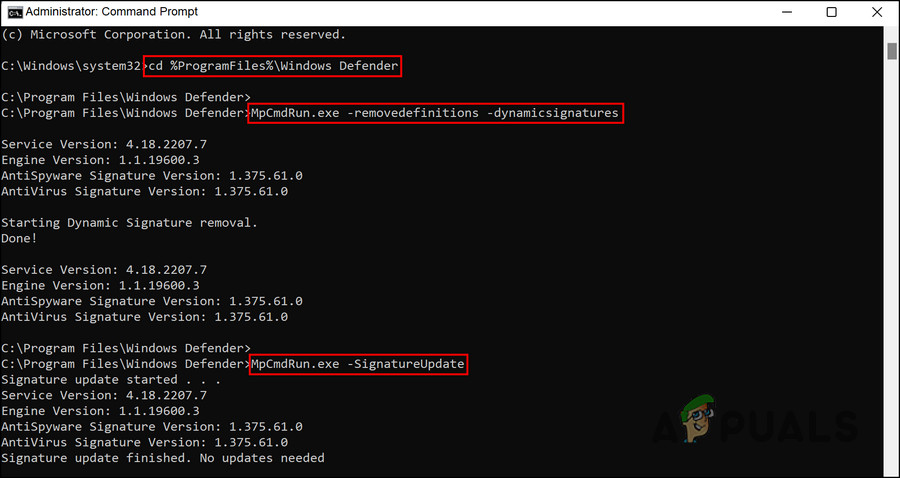
Execute the entered commands - When you’re done, close Command Prompt and restart your PC. After rebooting, check if the App & Browser Control option has reappeared.
3. Delete the Relevant Folder
In some cases, the issue is caused by a problematic folder inside the SecurityHealth directory in File Explorer. The exact reason this folder causes problems isn’t clear, but deleting it (along with its contents) has helped many users bring back the App & Browser Control option.
Before you start, make sure you’re logged in as an administrator. If you’re not, switch to an admin account. Also, keep in mind the folder name may be a bit different on your device, depending on your Windows version.
- Open File Explorer and navigate to:
C:\Windows\System32\SecurityHealth\1.0.2209.xxxxx-x
- Delete this folder and everything inside it.
- Afterward, check for any remaining updates and install them. Then restart your computer.
When your PC restarts, the App & Browser Control option should be restored in Windows Security.
4. Reset the Security Application
If the problem is due to corrupted files, you can reset the Windows Security application using PowerShell.
This process will return Windows Security to its original state, just like it was when you first started using Windows. As the default state shouldn’t have any issues, this should restore the missing App & Browser Control option.
- Right-click the Windows icon on your taskbar and choose Powershell (Admin). On Windows 11, select Windows Terminal (Admin). Or, type Windows Powershell in the search bar and choose Run as administrator.
- Click Yes when prompted by User Account Control.
- In the PowerShell window, enter this command and press Enter:
Get-AppxPackage Microsoft.SecHealthUI -AllUsers | Reset-AppxPackage
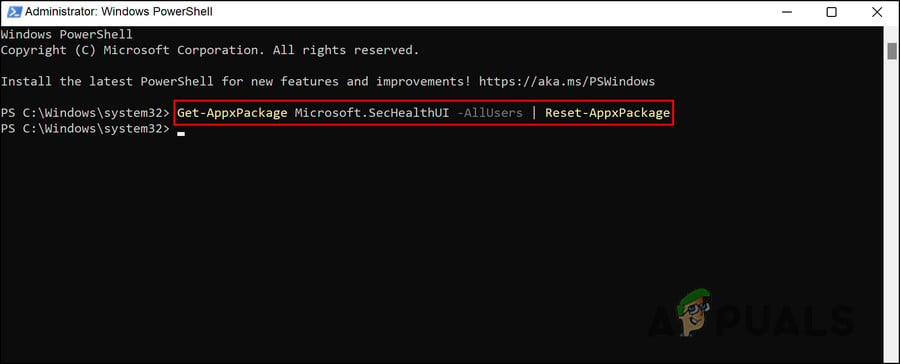
Reset the app - After the command is finished, restart your computer. Now, check if the App & Browser Control feature has returned.
The App & Browser Control option should now be available in Windows Security.
5. Perform a Clean Install
If none of these solutions work for you, you might consider performing a clean install of Windows.
A clean installation of Windows 10 or 11 will give your computer a fresh start, help free up space, and can fix many performance problems. It will also remove any viruses, malware, or unwanted software that could be affecting your system—including stubborn issues like the missing App & Browser Control.
If you’re not ready to do a clean install, you can also reach out to Microsoft’s official support team. They may be able to identify the specific cause of the problem and suggest an appropriate solution for your situation.




